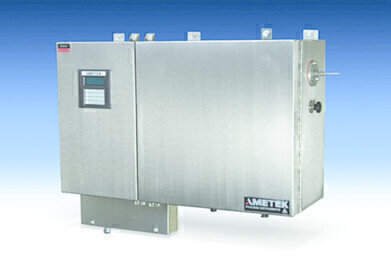Water/Wastewater
Tunable Diode Laser Absorption Spectroscopy (TDLAS) offers cost effective solution to pollution from pipelines and improving environmental compliance and efficiency of industrial plants
Nov 06 2018
Near-infrared and infrared tunable diode laser absorption spectroscopy (TDLAS) have garnered much attention for their three key attributes: specificity, high sensitivity, and fast response speed. The specificity is the result of the extremely high spectral resolution it can achieve. The second attribute results from the ability to rapidly tune the lasers, so techniques like wavelength modulation spectroscopy (WMS), can be easily implemented. And, because TDLAS is an optical technique, it offers very fast response speeds. The high specificity, sensitivity, and response speed of TDLAS make it very suitable for a variety of process measurements. TDLAS is especially well suited for monitoring carbon dioxide (CO2) levels during natural gas processing and liquefication. Its laser-based CO2 sensor offers faster response time, large dynamic range and low drift, compared with other techniques such as gas chromatography. CO2 is a naturally occurring diluent in oil and gas reservoirs that can act with H2S and H2O to form corrosive compounds that threaten steel pipelines. Measuring CO2 concentration is required at processing plants and natural gas custody transfer points to ensure the levels are low enough to meet quality specifications for pipeline transportation. Pipeline levels of CO2 should be no more than 2%-3%, while well head natural gas can contain as much as 30% CO2.
There are significant advantages to using TDLAS-based technology for measuring CO2 in a natural gas stream versus gas chromatography. Those advantages include the speed of the response, and low maintenance requirements. Similarly, TDLAS analysis provides higher accuracy and selectivity than either near infrared or infrared photometry.
CO2 measurement also is important in maintaining the efficiency and performance of natural gas liquefaction plants. Natural gas entering the plant often contains contaminants that must be reduced to ensure satisfactory plant performance. Several treatment processes are available for the removal of CO2 from feed gas, each has its advantages and limitations.
Regardless of the process used, process optimisation requires measurement of the CO2 before and after purification of the feedstock. Additionally, the complex process that transforms the natural gas into a liquid involves very-low-temperature operations, which can result in CO2 freeze out on the exchanger surface, plugging lines and reducing plant efficiency.
Ametek’s 5100 TDLAS is an extractive-type CO2 analyser. No sample conditioning is required. The instrument utilises a fully integrated sample handling system and a sealed reference cell for continuous on-line analyser verification. The 5100 also employs digital signal-processing methods that allow for the implementation of multivariate calibration and can accurately measure two separate species with completely overlapped spectral responses. Some measurement combinations relevant in natural gas operations are CO2 and water, and CO2 and methane. Pipelines currently are the most common method for transporting large quantities of natural gas over long distances. There are currently over 1,500,000 miles of dedicated pipelines used to transport natural gas in the United States for transmission and distribution. Minimising the water content in the pipelines is critical to prevent pipeline corrosion.
If water is present it will react with the CO2 to from carbonic acid, or H2S to form sulphuric acid. Both acids can corrode pipe, potentially leading to safety risks, lost product, or environmental pollution incidents. Historically, electrochemical detectors have been used to monitor the water level in the samples. This type of sensor degrades over time as it is exposed to low level organic components.
With Ametek’s 5100 TDLAS system, the detector element does not physically interact with the pipeline gas and, therefore, there is no change in the system response relative to the sensor contamination.
Landfill gas produced through decomposition of organic material contains 45% to 60% methane and 40% to 60% CO2. Methane is a potent greenhouse gas with a global warming potential that is 25 times greater than CO2. Rather than releasing landfill methane into the atmosphere or flaring it, methane can be collected, converted and used as an energy source. Operators of landfill gas plants need to continuously evaluate the percentage of methane in their product because this determines the end use of the gas and the pricing. A TDLAS analyser is a good choice for such a task. Traditionally gas chromatography and mass spectrometry are used to provide methane monitoring.
Gas chromatography offers high sensitivity, but it has the disadvantage of a slow response time. Mass spectrometers can quickly measure multiple components but may have a significant total installation cost. A TDLAS analyser provides real-time monitoring with a data acquisition rate of two seconds and is significantly less expensive than both gas chromatographs or mass spectrometers.
Digital Edition
AET 28.3 September 2024
September 2024
Business News - ENVEA announces acquisition of APAQ Group - SICK and Endress+Hauser sign strategic partnership - Efforts to curb gas flaring intensify amid environmental concerns Air Monito...
View all digital editions
Events
WEATHER • CLIMATE • WATER / EARTH OBSERVATIONS / GREEN ECONOMY
Oct 29 2024 St. Petersburg, Russia
Oct 30 2024 Hong Kong
Nov 05 2024 Toronto, Canada
Nov 05 2024 Rimini, Italy
Nov 06 2024 Ho Chi Minh City, Vietnam

.jpg)

















